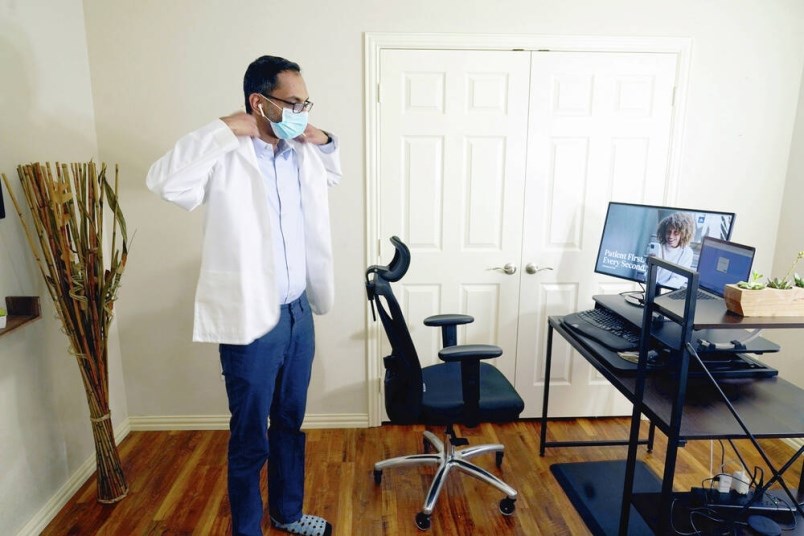This month, in a letter to physicians, senior provincial health officials urged doctors to scale back virtual medicine and resume seeing patients in person.
They also warned that the fee schedule for virtual visits is under review. For “under review” read, “about to be reduced.”
So what’s going on? It appears there are two principal concerns about the extent to which virtual care has replaced the traditional in-office visit.
The first concern is that, reputedly, some physicians haven’t seen their patients face to face for as long as 18 months—the period of the COVID outbreak. This is clearly substandard care.
While it’s true that many conditions that require regular consults with a doctor do not require in-person meetings every time, there are limits as to how far this practice should be carried.
A simple example: A patient with diabetes will, in most cases, require extended monitoring. Some of this can be done with virtual visits.
But suppose the patient develops skin cancer, and doesn’t realize it. A face-to-face visit will uncover this threat. A phone call will not.
So yes, some correctives are needed.
The second concern is that a number of physicians who are reluctant to see patients in-office are sending them to the local hospital emergency department. Understandably, this has infuriated ER staff members, who are already stretched to breaking point.
Here, too, some limiting guidelines are needed. Doctors who rely on hospitals to do their work for them need to be reminded that the “E” in ER stands for “emergency.”
However, there is another side to this. Beyond any question, the advent of virtual medicine has expanded access to health care, particularly access to family physicians.
Everyone knows how difficult it has been to find a family doctor. Phone consults are far more efficient, time-wise, both for physicians and patients.
Again, a substantial part of a doctor’s clinic hours are spent on writing prescriptions, ordering diagnostic tests and other routine procedures. For someone with a chronic condition, asthma for instance, if the disease is under control, there may be no point in an office visit simply to renew an inhaler prescription.
Likewise, if precautionary tests have been ordered and everything is fine, there may be no need for an in-person follow-up visit. A phone call will do.
In short, by all means define more closely when virtual medicine is appropriate, and where it is not. This is beneficial both for patient safety, and for the running of hospital ERs
But reducing the fee structure is an entirely different, and counterproductive, measure.
If this occurs, and that’s what the province is hinting, there will be a temptation for physicians to resume higher-paid office visits, whether or not they are medically necessary. In short, we’re back in the bad old days.
In many respects, the COVID outbreak of the past 18 months has been one of the worst setbacks in recent history.
Yet providentially, it has also offered an unplanned but robust natural experiment with a transformative technology — virtual medicine. Cutting fees will needlessly curtail the gains that have emerged, timeliness and improved access among them.
The message is simple: Hands off the fee schedule for virtual medicine.



